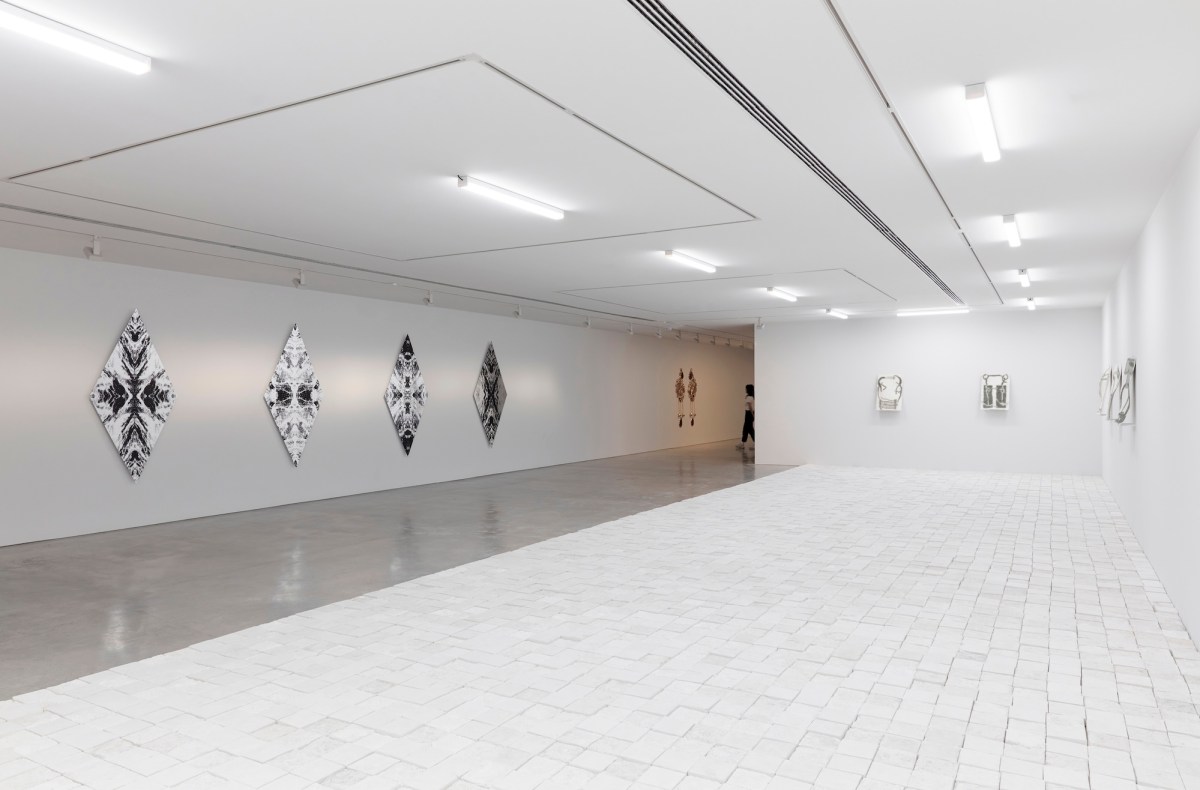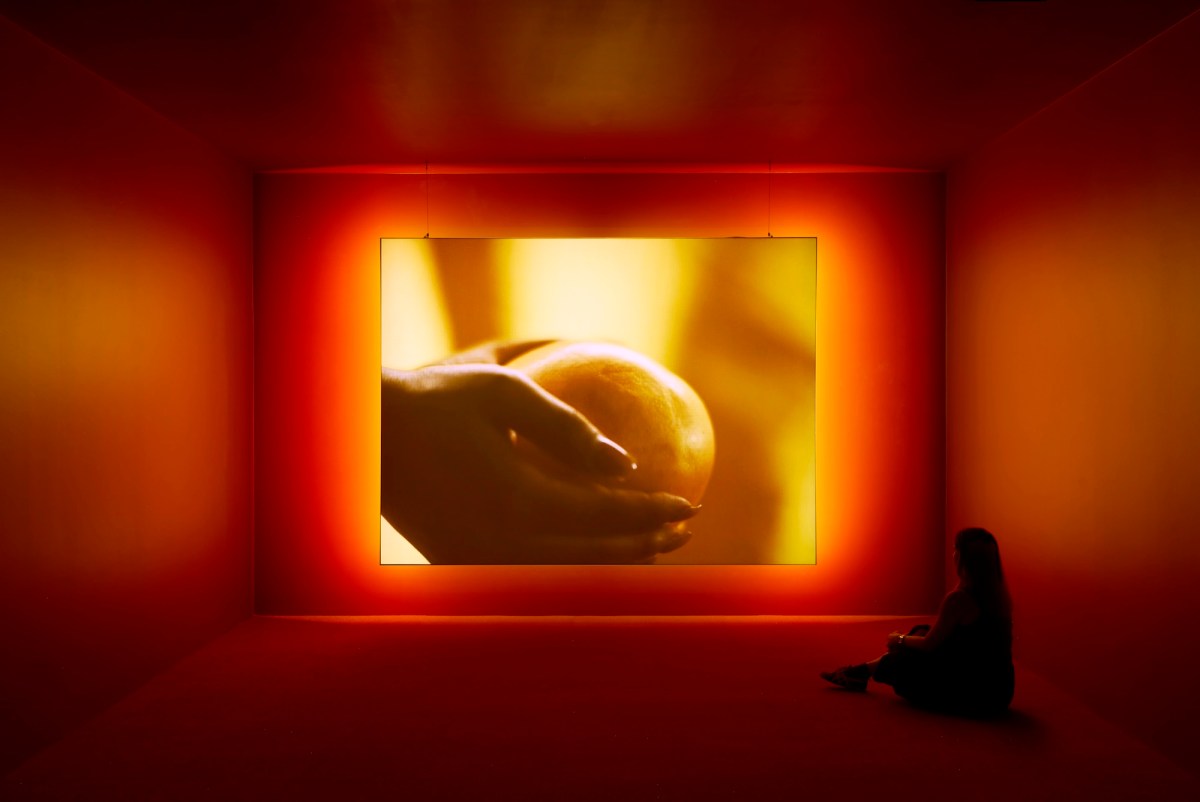Primavera is the Museum of Contemporary Art Australia’s (MCA) annual exhibition that showcases the work of Australian artists aged 35 years and under. Under the hand of a guest curator, it can be a career altering moment for both the artists shown, and indeed the curator themselves. This year, that task was handed to Lucy Latella, and I have to say it is one of the freshest editions of Primavera that I have seen for some years.
Now in its 33rd year, ‘freshness’ is something that the exhibition has struggled with. Latella’s edition, however, is dynamite – it’s ambitious, dynamic in its material exploration and it has great depth, while also being an immersive viewing experience for regular punters.
The five artists shown are Teresa Busuttil (SA), Chun Yin Rainbow Chan (陳雋然) (Vic), Aidan Hartshorn (ACT), Monica Rani Rudhar (NSW) and Sarah Ujmaia (Vic) – and they couldn’t be any more different in terms of their works. And yet, Latella weaves a cohesive narrative of intergenerational displacement, and a lived diasporic experience that has the rigour of making in our times.
Their works are presented in the Level 2 Galleries, alongside the MCA Collection, and by placing them in context with their contemporaries and colleagues, it pulls them into a currency of collecting.
I prefer this embeddedness in a lineage of looking at art now, rather than segregated in the lower galleries, where Primavera has traditionally been shown. What this also means is that the exhibition can be entered from either end, so short-circuiting any hero works among the group.
Entering one end, viewers find the impressive installation by Naarm/Melbourne artist Sarah Ujmaia, And thank you to my baba for laying the timber floor (2024), comprising nearly 4000 hand-cast pavers of fired and unfired shell grit – the kind of pavers found in old town squares.
They have a white purity of marble. Latella explains: “Ujmaia draws parallels between the slow transformation of these raw materials into valued stone, and the way oral languages evolve across generations,” adding, “Traces of chalk, associated with language and learning, transfer onto the visitor as they traverse the pavers, which subtly clink underfoot to evoke the activity of the marketplace.”
It is a silent, yet stunning piece that says volumes through its simplicity. Ujmaia is a first-generation Chaldean woman, and the first member of her family (which migrated from northern Iraq) to be born in Australia.

Her installation sits beautifully alongside a suite of chevron-shaped shields by Aidan Hartshorn, a Walgalu (Wolgal, Wolgalu) and Wiradjuri man, who uses contemporary materials – in this case aluminium – to address industries that have disrupted his ancestral connections to Country. In particular, they look at the Snowy Mountains Hydro-Electric Scheme, which was built on sacred Walgalu sites, making these largely inaccessible.
Hartshorn has inscribed his shields with ancestral motifs and, looking into them, we find ourselves reflected, forcing us to question our role in the histories of colonisation.
Completing his installation, titled Yiramir Mayiny (River People) (2024), is what Latella describes as “ghostly photographs” of water discharged by Snowy Hydro. It is an extremely powerful and beautiful work.
Both artists are a great discovery, and demonstrate terrific career promise.
Entering the opposite end of the exhibition space, and in complete contrast to this minimal presentation, visitors can first encounter the work of Tandanya/Adelaide artist Teresa Busuttil.
She draws on her Maltese-Australian heritage using found objects to create a kitschy shrine of seashells, which she has titled sinners grotto (2023). It is paired with mini shrines dotted around the walls, which have been painted a vibrant lavender colour.
Each assemblage draws on Maltese culture, albeit pop culture or religious iconography, and collectively construct a kind of self-portrait of her diasporic existence. However, the scale of these feels a little small, overwhelmed by the wall colour, and out of kilter with the central shrine.

Nicely paired alongside Busuttil’s work, for their materiality, is a suspended flotilla of silk scrims that have been created by Chun Yin Rainbow Chan (陳雋然). Music plays a big part in Chan’s creative process, and here they revitalise the folk songs of women from the Weitou people, Hong Kong’s first settlers.
Long Distance Call 長途電話 (2024) has an immersive quality, with viewers moving in and around the painted scrims, projected animations and a soundscape. Chan has sampled the ringing of a telephone – a persistent memorial to all the international calls by diasporic communities, especially the women in her own family, that drive to hold on to dialect and kinship.
What makes this particularly interesting is Chan has experimented with the AI program ChatGPT to translate beautiful laments in the Weitou dialect, in turn asking how we maintain genuine connection, when dislocated.
Completing the exhibition is the work of Monica Rani Rudhar, a Sydney-based artist born to Indian and Romanian migrant parents. Moving across a super-sized earring sculpture, and a new video work, like Chan, Rudhar navigates the feeling of loss that comes with cultural disconnection.
What all these artists do is offer a tenuous thread between past and present. A great example, is Rudhar’s painted terracotta earrings, which replicate a gift her father gave to her mother as an Indian marital custom. Her video further fleshes out those ideas of cycles, from bodily actions and traditions to ancestral guidance and ritual.
Overall, these works are all very material-led making for a cohesive exhibition that celebrates the layering of narrative carried in material histories and the lived contemporary diasporic experience. Primavera can typically feel fractured – not connected by a theme and trying to be more representative across geography and time. Latella has done a great job of managing both.
They are also highly autobiographical works – which can feel especially indulgent in an early career showcase. And yet the artists speak to a universal experience of loss and displacement when disconnected from place and kin. In some ways, they are dealing with topics and ideas that may be considered ‘old-fashioned’ in our 21st century world – for example, dowries and grotto shrines – but they prove that the values within these objects, and their materiality, are just as relevant today to a next generation of artists.
It is an interesting exhibition and definitely worth a look.
Primavera 2024: Young Australian Artists
The Museum of Contemporary Art Australia (MCA Australia)
30 August until 27 January 2025
Free.





_Encounters-in-Reflection_Gallery3BPhoto-by-Anpis-Wang-e1745414770771.jpg?w=280)